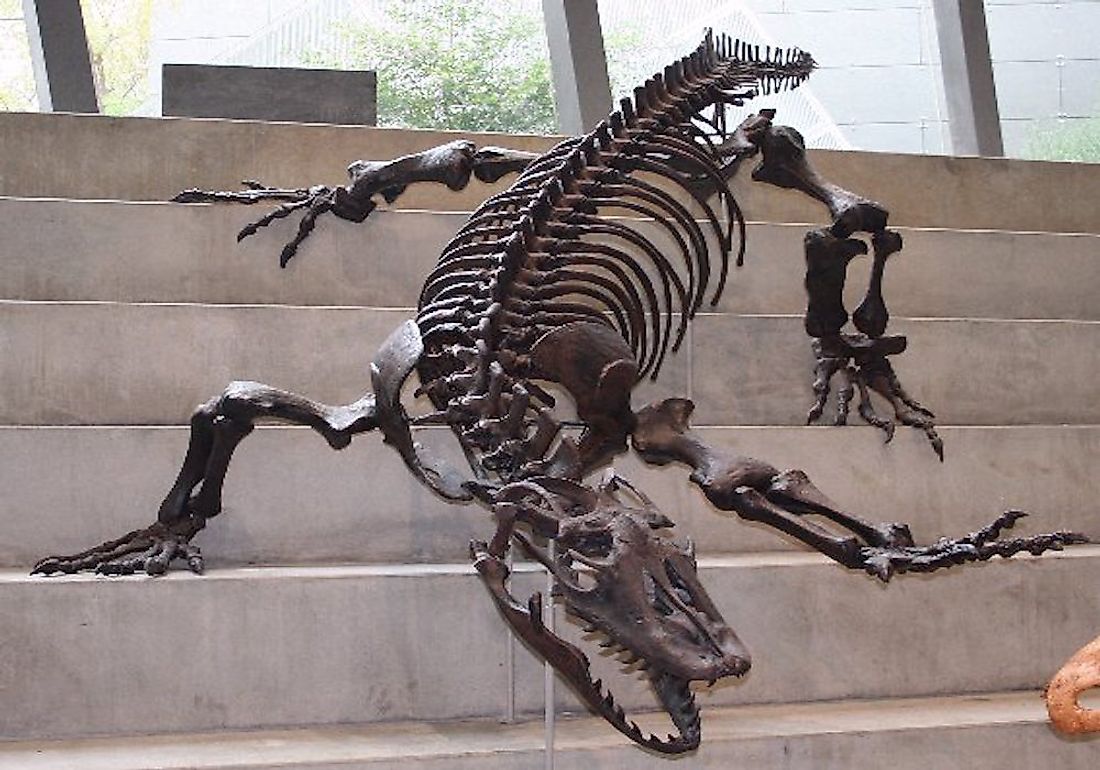Megalania - The Largest Terrestrial Lizard That Ever Existed

An extinct monitor lizard named Megalania is considered earth’s largest terrestrial lizard yet. It roamed in the southern region of Australia during the Pleistocene period. It is not evident whether the initial settlers of the area encountered it and the remains of the youngest fossil date back 50,000 years. The Megalania was just one part of a megafaunal assemblage that inhabited southern Australia.
Taxonomy
Sir Richard Owen designated the name Megalania in 1859 which translates to “ancient great roamer.” The term is commonly misquoted as “ancient giant butcher” because "lania" is Latin for the feminine form of a butcher. Owen further accommodated the animal by creating the genus Megalania, which would make it scientifically known as Megalania Prisca. This move by Owen has been a cause of debate. A section of scientists regards the genus Megalania to be a minor synonym of Varanus, which refers to all living monitor lizards. Some Scientists use the genus Megalania interchangeably with Varanus because of the close similarities with Varanus species. Megalania Prisca has a close relationship to other monitor lizards in Australia classified as Varanus.
What Was The Size Of The Megalania?
The exact size of the animal is not known due to the absence of complete or almost complete fossil skeletons. The initial measurements were 23 feet for the maximum length and a range of 1,320 to 1,370 lb for the maximum weight. Subsequent research by Stephen Wroe in 2002 proposed a maximum length of 15 feet and an average weight of between 214 to 348 lb. Another research done in 2009 settled on at least 1,268 lb and 18 feet. Ralph Molnar, in his 2004 book, used the relationship between the total body length and dorsal vertebrae width to estimate the size of the megalania. If it possessed a long thin tail such as the one of the lace monitor, its maximum length would have been 26 feet. If its tail to body ratio were like that of the Komodo dragon, its length would have been 23 feet. A length of 23 feet translated to a weight of 4,280 lb with a leaner average of 710 lb.
Palaeobiology Of The Megalania
Megalania had heavily built limbs as well as a large skull. Its serrated blade-like teeth were useful in predation. Among its variety of prey were small mammals and reptiles, other animals of medium to large size including their eggs and young ones. Megalania’s sprinting speed is estimated to have been between 5.8-6.7 mph, and it is closely similar to that of the Australian freshwater crocodile (Crocodylus johnstoni). Its status as the principal predator of large animals during the Australian Pleistocene has been contested by other scientists who argue that the marsupial lion accounted for more megafauna butcheries than the megalania did. The Quinkana, a terrestrial crocodile, also thought to have existed long before Megalania and its remains date back 40,000 years ago. It had a huge skull with a small crest situated between the eyes.
Was The Megalania Venomous?
Megalania is classified in the proposed clade Toxicofera, together with other carnivorous lizards including the crocodile monitor and the Komodo dragon. These animals have toxin-producing oral glands. Megalania is also classified as an Anguimorpha raising speculation that it could have been venomous. If it was indeed venomous, megalania would gain the title of the largest poisonous vertebrate to ever exist on earth.











